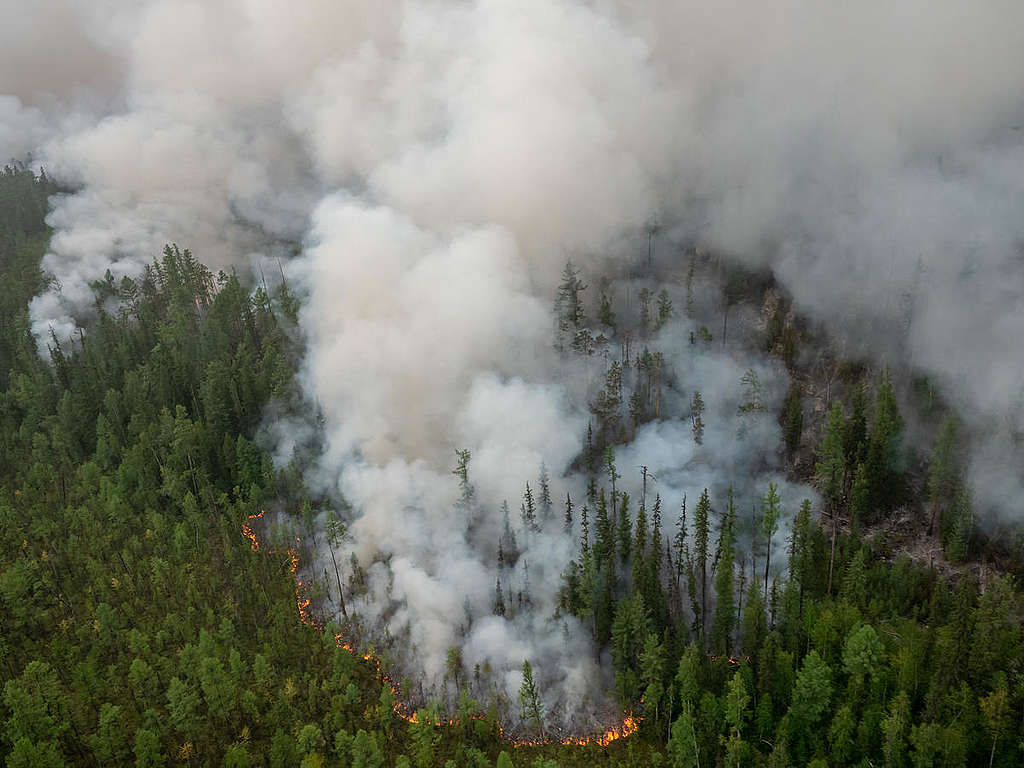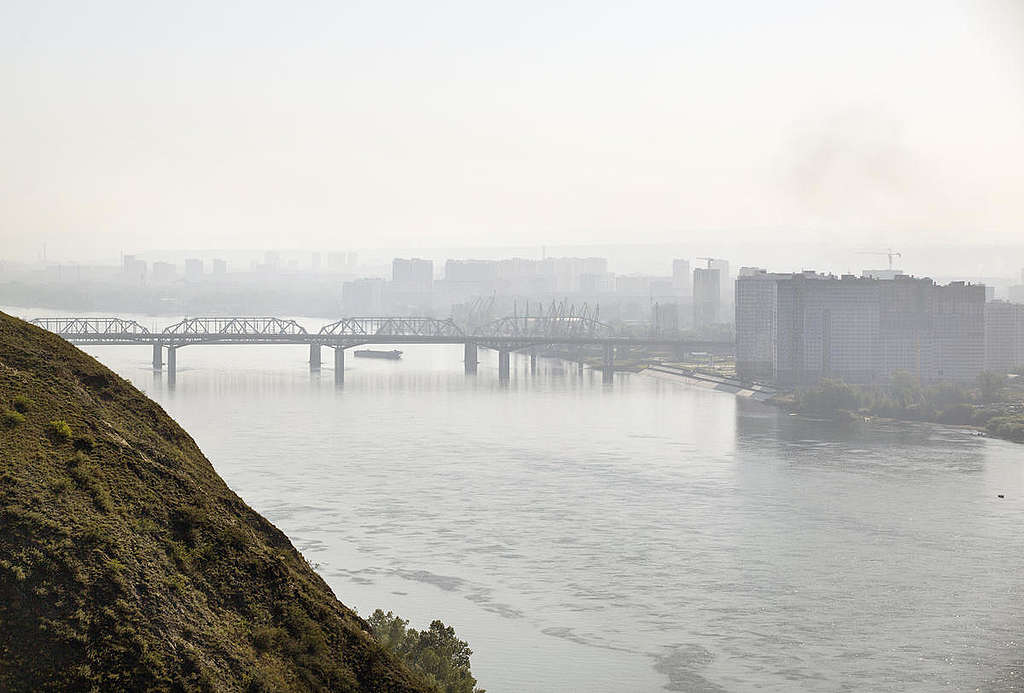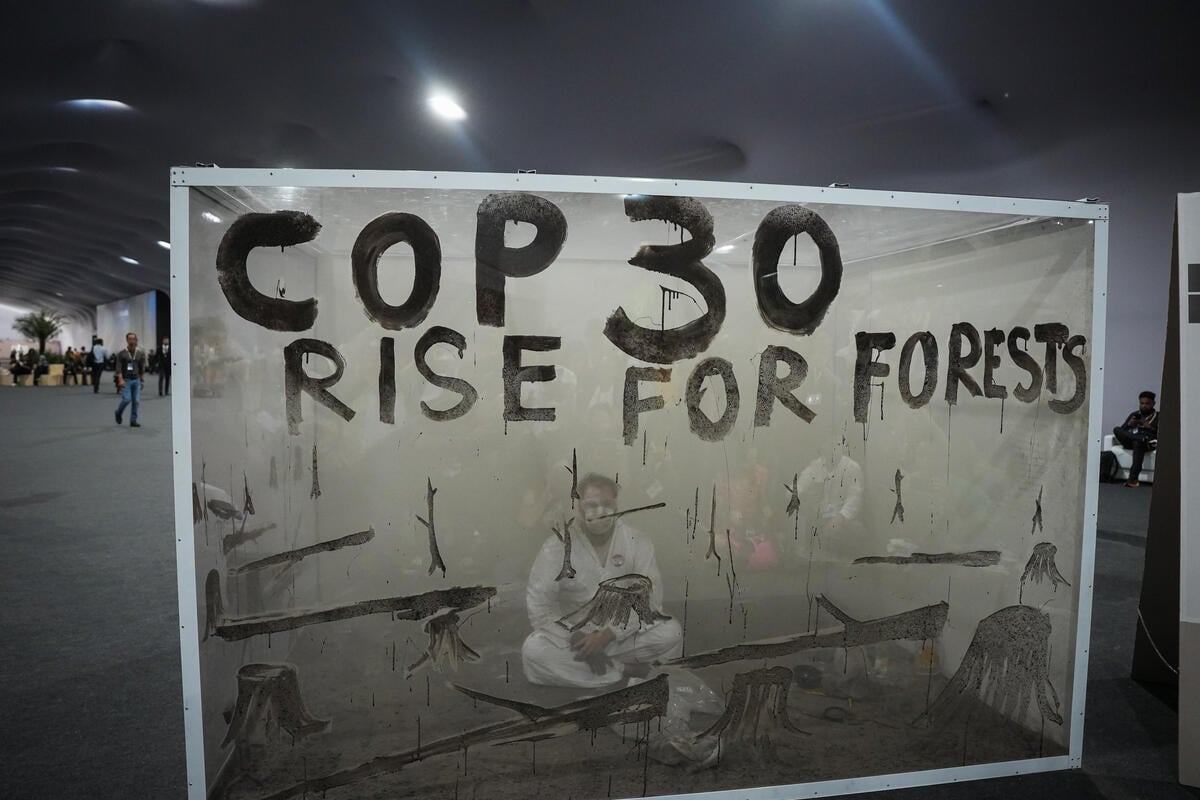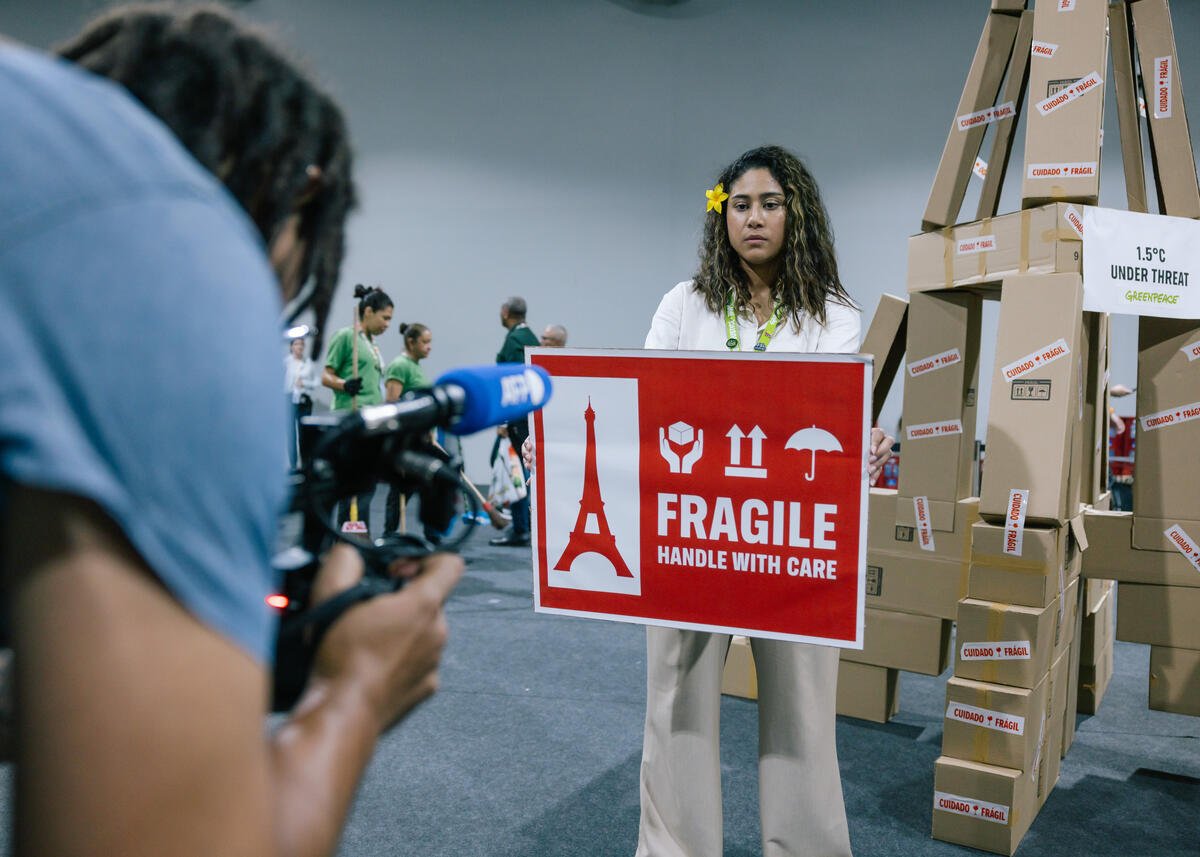Forest fires in Siberia continue raging. As you are reading this, more than five million hectares are burning with less than 90% of the fires being managed. A Greenpeace Russia team went on site to document this climate catastrophe and interview locals who have been shrouded in smoke for the past weeks.
 © Greenpeace
© GreenpeaceThe further north we travel in the Krasnoyarsk region of Siberia, the thicker the haze. We can’t see the actual fire, but the first signs are there: caustic smog seeps in through ventilation, a helicopter rumbles somewhere above us, a military plane passes by higher up, a fire engine overtakes us.
We arrive to Boguchany, a district centre in the north, where the Ministry of Emergencies and the Ministry of Defence are sending meagre forces to battle the blaze. We find out that it is only possible to reach the fire by helicopter. The strength of the flames is so much that smoke envelops hundreds of kilometres — forests, cities and villages — in a dense grey blanket.
“We live in an area where we should breathe easily, but now we don’t even open the windows,” a local, Dmitry Akhmadyshin, tells us. “We drive with the fog lights on. We wake up in the middle of the night with a headache, take pain medication and go back to bed.”
While people are trying to hide from the smoke behind closed windows, the Russian Ministry of Emergencies and the Ministry of Defence sending more people, equipment and machines to the area. Helicopters regularly drop off firefighters in the taiga. Water is dumped on the fire from other planes and helicopters. There are many courageous people here who are doing everything possible to cope with the fire. But sadly, no human power can put it out.

“It started back in June. We have nowhere to hide, even in our apartments we smell the burning. It feels like we have absorbed it; in clothes and even in our bodies,” said a 32 year-old Siberian, Svetlana Tuflyakova. She had been outside with her child to quickly go for groceries and return indoors. “Children cough, and it’s difficult to determine if it’s a virus or haze-related. And for those who already suffer from pulmonary respiratory the situation is beyond words.”
Combustion creates toxins; it contains a carcinogen (benzapilene) and enhances respiratory diseases. But Siberians are not wearing masks. It wouldn’t make sense: the smoke has not just filled the streets, it has settled into houses and has already accumulated in their respiratory systems. We ask people if they want to leave, and everyone answers reasonably: “To where?”. All of Siberia, from Baikal to Yakutia, is downing in haze. The only hope now is rain.
Hope
The current fires are a tragic result of weak legislation. Most of the burning forests are in so-called “zones of control”: areas where regional authorities do not have to put out fires if there is no danger to the population and if the cost of extinguishing exceeds the expected damage. Greenpeace Russia had launched a national petition which aimed to change this law, decrease “zones of control” and raise the budget for forest fire protection. It mobilised more than 400.00 citizens and – worked! The Russian Ministry of Natural Resources and Environment finally proposed changes for the law that included all Greenpeace Russia demands! This is a huge win achieved with active Russian citizens: it will help us to avoid catastrophic wildfires in Siberia next year. This means that we will stop a new climate crisis from happening – save millions of hectares of valuable taiga forests and prevent the release of hundreds of megatons of carbon dioxide into the atmosphere.
You can support Greenpeace Russia work and help the office to achieve new victories, here.
Tatiana Vasilieva is a wildland fire communication specialist with Greenpeace Russia



